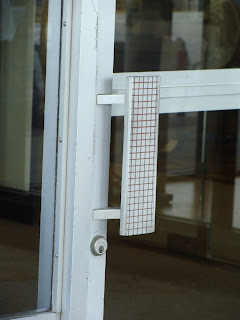I was going to do this post about two years ago, but then I completely forgot. I thought to commemorate the Cardinals' eleventh World Series victory, I would look at the third Busch Stadium and how it borrows and celebrates earlier architectural monuments in St. Louis.

First, and perhaps the most obvious, is the Eads Bridge, one of the most important bridges in the world; as you can see, the main entrances to Busch feature giant arches reminiscent of the bridge.

See more of historic bridges
here, from some of my earlier posts.

Likewise, the ornamental terrcotta panels clearly show the influence of the
Merchants Laclede Building on Fourth Street, once nicknamed the Wall Street of the Midwest.

Look at more of St. Louis and other cities' historic office buildings
here.

Finally and perhaps the most obvious, the nearby Cupples Warehouses influence the overall composition of the stadium.

I was remarking this weekend about how important the Cardinals are to St. Louis; in a metropolitan area where it is a spectator sport to try and watch the city fail, no one dares lay a hand on the one of the most storied teams in baseball. They can take away 500,000 people, but they can't take away the Cardinals.
 First, and perhaps the most obvious, is the Eads Bridge, one of the most important bridges in the world; as you can see, the main entrances to Busch feature giant arches reminiscent of the bridge.
First, and perhaps the most obvious, is the Eads Bridge, one of the most important bridges in the world; as you can see, the main entrances to Busch feature giant arches reminiscent of the bridge. See more of historic bridges here, from some of my earlier posts.
See more of historic bridges here, from some of my earlier posts. Likewise, the ornamental terrcotta panels clearly show the influence of the Merchants Laclede Building on Fourth Street, once nicknamed the Wall Street of the Midwest.
Likewise, the ornamental terrcotta panels clearly show the influence of the Merchants Laclede Building on Fourth Street, once nicknamed the Wall Street of the Midwest. Look at more of St. Louis and other cities' historic office buildings here.
Look at more of St. Louis and other cities' historic office buildings here. Finally and perhaps the most obvious, the nearby Cupples Warehouses influence the overall composition of the stadium.
Finally and perhaps the most obvious, the nearby Cupples Warehouses influence the overall composition of the stadium. I was remarking this weekend about how important the Cardinals are to St. Louis; in a metropolitan area where it is a spectator sport to try and watch the city fail, no one dares lay a hand on the one of the most storied teams in baseball. They can take away 500,000 people, but they can't take away the Cardinals.
I was remarking this weekend about how important the Cardinals are to St. Louis; in a metropolitan area where it is a spectator sport to try and watch the city fail, no one dares lay a hand on the one of the most storied teams in baseball. They can take away 500,000 people, but they can't take away the Cardinals.














































